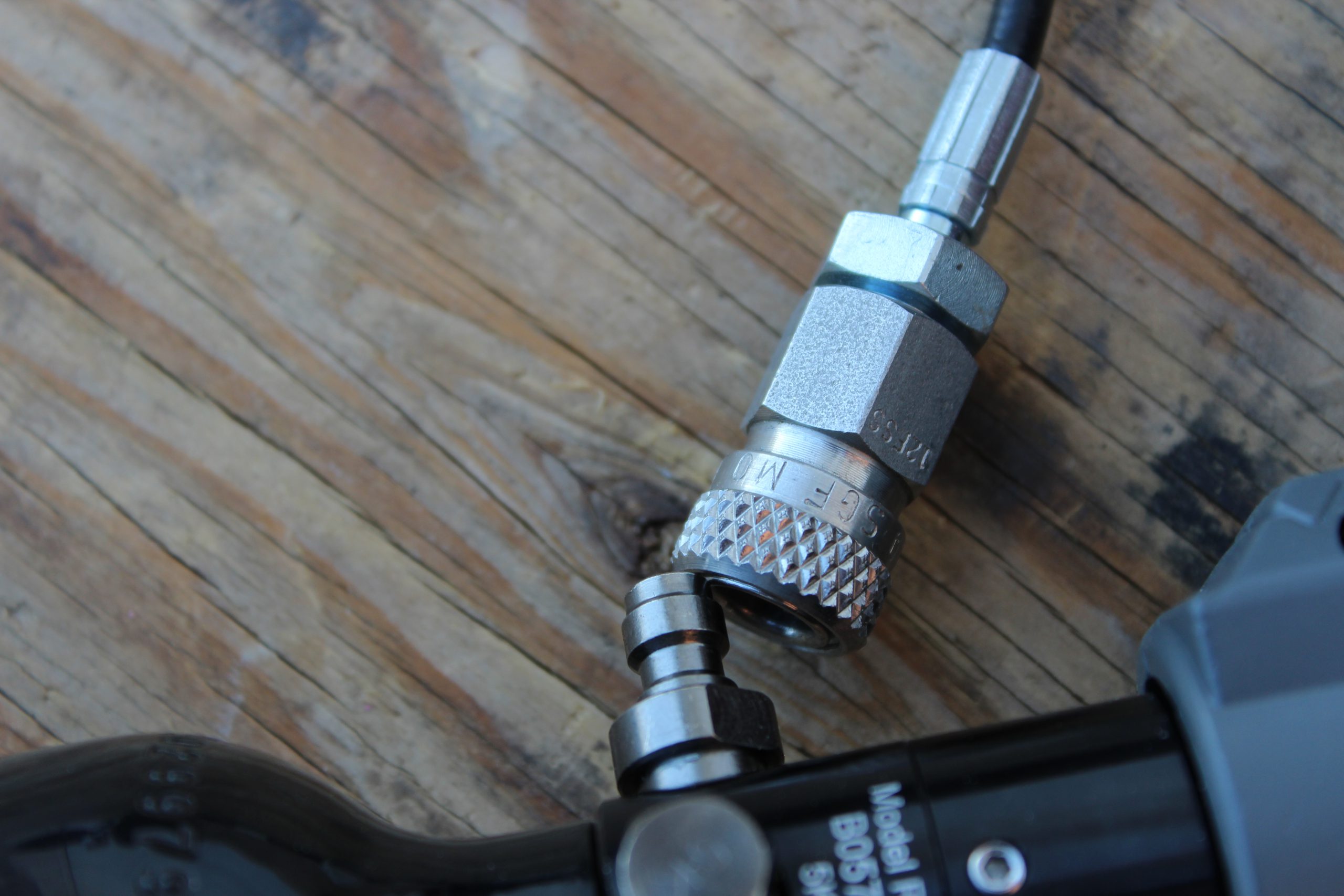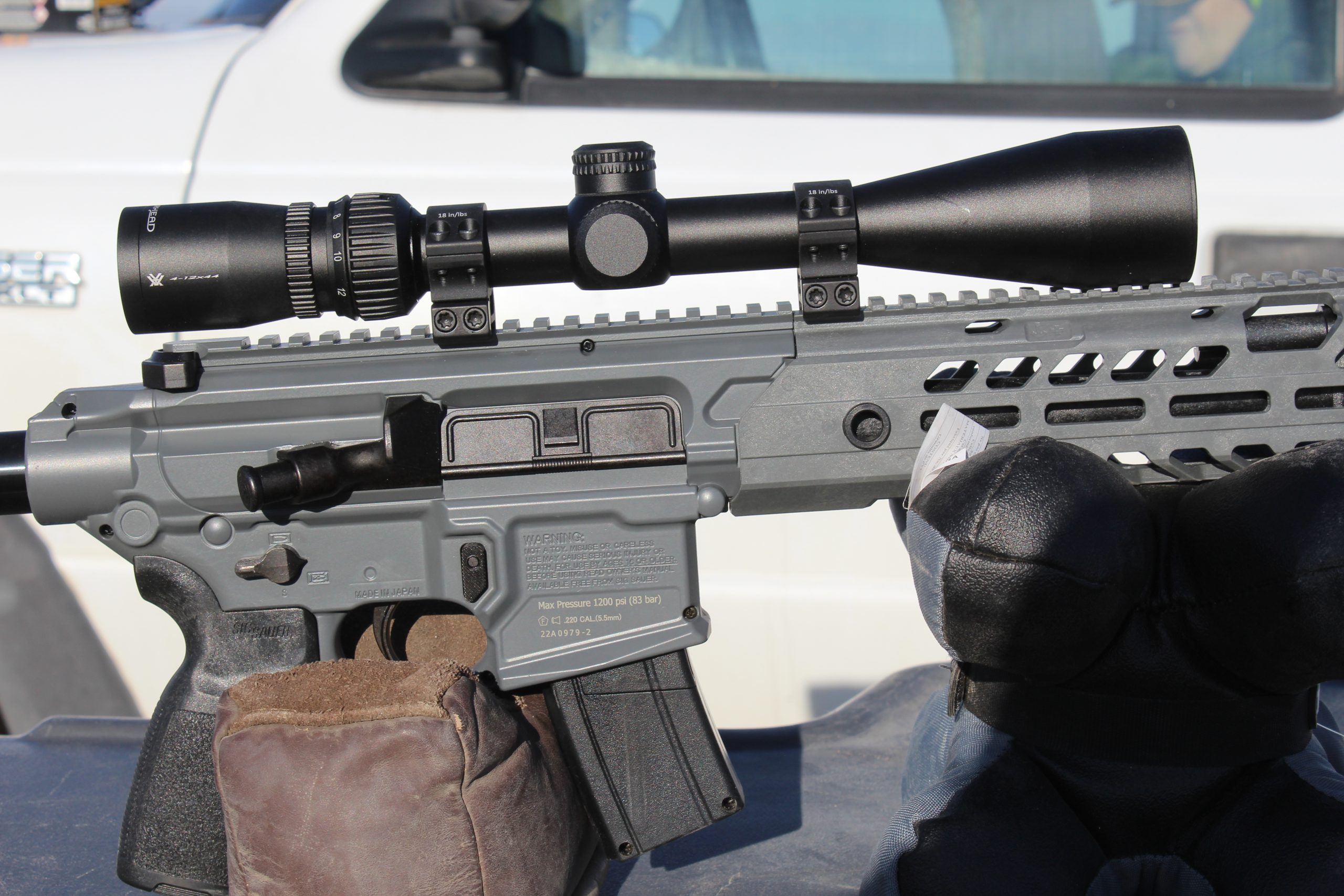By: Tom Claycomb III
Years ago, I tested all of the Sig Sauer airguns. When they first got into airguns, I thought here we go, it’s just one more big-name firearm manufacturer that is getting into the airgun market. But as soon as I started dealing with them, I quickly saw that they had a way different marketing strategy than any of the other spin-off companies.
Here’s what I mean by the above paragraph and why they were smart to get into airguns. They make all of their airguns to mimic their real firearms which makes their airguns great training tools. All of the airguns have the same features as their powder-burning big cousins! Sure, some of the features are placebos such as the forward assist on the Sig MCX Virtus PCP air rifle since you don’t need this feature on an airgun, but still, they all look like their big cousins on the outside. Also, they’re the same weight as the real firearms.
So, the Sig airguns are a safer and cheaper way to practice so you’re more proficient with the real firearm. I would think this would be a good sales pitch to police departments which would encourage them to carry Sigs.
And of course, Sig didn’t just pay another company to make a cheap spin-off. Mine are all well-made. For example, when I first received one to test that had a Sig scope on it, I automatically assumed that they had followed suit after some of the other lower-grade airgun companies and had a Chinese company make a cheap scope for them and stamp a Sig logo on it. All of their scopes that I have tested have been decent airgun scopes.
PREPARING TO SHOOT

Photo by Author
So without further ado, let’s get into the product review on the Sig MCX Virtus PCP air rifle which is a .22 cal. pellet gun. Let’s start with pulling it out of the box and getting it ready to shoot. The air tank screws into the butt end of the gun. Simply screw it in and when it hits the end, tighten it one more ¼ turn. Next, get the butt plate and tighten it onto the end of the tank.
To fill the tank, they recommend using an air bottle or a hand pump. I assume they didn’t recommend using a compressor because they’re scared you’ll overfill it past the recommended 3,000 PSI but Umarex has come out with a portable ReadyAir compressor. For power you can plug it into a 120V wall socket or to the battery of your truck when out in the field hunting. In the long run that is cheaper and a lot more convenient than using an air tank.
FILLING A PCP AIR TANK

Photo by Author
If you’re not familiar with PCPs they are quite easy to fill. Attach an airgun hose to your power source (hand pump, portable air tank or Umarex ReadyAir compressor). You can fill your tank with a hand pump but they’re a major pain! So like mentioned above, I’d recommend that you get a Umarex ReadyAir compressor.
Hooking the air hose to your Sig MCX Virtus PCP is easy, it uses a quick connect. After filling the tank you’ll have to bleed the pressure off the line before removing it. Some PCPs use a probe pin that sticks into the tank. I like the quick connect connection style better. So to make it clear, air the tank up to 3,000 PSI then shut off the air source, bleed off the air line, remove the hose, and you’re ready.
Loading the magazine is simple. Hit the magazine release to drop out the mag. Open the side flap on the magazine and remove the pellet belt. It is not connected between the white part of the belt. Pick it out and you’ll see what I mean. Lay it on a table (metal side down) and press pellets into the openings. It holds 30 pellets. Replace the belt in the magazine. Or you can actually load it without removing the belt from the magazine.
The butt plate in the handle is removable which has some tools for use on the gun. You can use them to tighten the butt plate, adjust the peep sight and it also has a little probe to help properly seat the pellets in the belt, though I didn’t need it. You’re now ready to shoot.
It comes with a heavy-duty set of flip-up peep sights. They appear to be a nice sight like you’d find on a real rifle. But I use my airguns for hunting small varmints/game so I wanted a scope on the Sig MCX Virtus PCP.
I always use an Otis Gun Maintenance kit to hold my guns steady when working on them. The first step to install a scope was to remove the peep sights. All that took was to unscrew them and pull them off the Picatinny rail. I like to have my scopes ride as low as possible. I don’t like them setting way off the barrel so I used a set of medium height Vortex Pro Series rings.
Since I’m shooting small animals with small kill zones, I need a scope with higher magnification so I went with the Vortex Copperhead which is a 4-12×44 scope. Due to the medium rings the front bell on the scope hit the Picatinny rail. I was about to go grab a set of “high” rings but then I thought no, it’s barely hitting so I ground down the center of the slots on the Picatinny rails that were hitting the scope just enough so the scope no longer touched it (the Picatinny rail is made out of hard plastic). I was now good to go. Using a Brownell’s torque wrench, I tightened down the scope to the Vortex spec.
The Sig MCX Virtus PCP was now ready to shoot so I headed out to the high desert where I do all of my shooting. To test a rifle, you must have a perfect rest or it’s not fair to the gun company. Otherwise, what you declare as the accuracy of the gun is only determined by how well you can shoot off the side of your truck. So for this shooting I used a Caldwell Stable Table Lite and sandbags.
Same with ammo. You must use the best ammo or the gun review shows poorly due to using substandard ammo. So, for this test I used JSB Jumbo Heavy Diabolo 18.13 gr. pellets. After testing hundreds of airguns and nearly all of the pellets on the market I’ve determined that JSB makes the most accurate pellet.
For precision shooting I like the Allen targets with the orange blocks. They help me have a pinpoint focus and immensely helped me tighten my groups.
After sighting in the Sig MCX Virtus PCP, I then shot five 3-shot groups to see what kind of groups I could obtain. I wasn’t happy with the groups I was getting so I went home and grabbed some more .22 pellets and went out to the gun range with various pellets and got a 1 1/8-inch group with pellets from RIFLE in their Premium Series Flat Head 18.67 gr. pellets. That’s good for a semi-auto airgun. Even though the company specs say you get the best groups with 14.5-16.6 gr. pellets, that wasn’t the case for me.
TRIGGER

Photo by Author
My trigger gauge doesn’t go that heavy but I bet that it is close to 9 lbs. I think that I could have gotten better groups if it was a few lbs. lighter.
CONCLUSION
The Sig MCX Virtus PCP is a fun airgun to shoot. I think that you’d like it for plinking and hunting small game/varmints. Plus, it’s a cool-looking PCP. The MSRP is $329.99 and as is usual, we will close with the company specs.
DETAILS
The MCX VIRTUS PCP rifle is the latest expansion to the SIG AIR precision line of airguns, and the introduction of SIG AIR products to the pre-charged pneumatic (PCP) category of airguns. The MCX VIRTUS PCP doubles the muzzle energy of classic CO2 models and uses the SIG Rapid Pellet Magazine making it a great tool for target training and defending against unwanted varmints.
Specification
| Action Type | Semi-Auto |
| Accessory Rail | M1913 |
| Operating System | PCP |
| Sights | Folding |
| Stock Type | Synthetic |
| Caliber | 22LR |
| Optimal Pellet Weight Range | 14.5gr – 16.6gr |
| Mags Included | (1) 30rd Pellet Mag |
| Overall Length | 37.25 in. |
| Trigger Weight | 4.25 lbs. |
| Muzzle Velocity | up to 600 fps |
| Weight | 7.5 lbs. |

